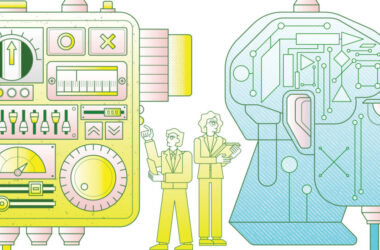The United Automobile Workers union has escalated its ongoing strike against General Motors (G.M.) by shutting down production at the automaker’s largest U.S. factory in Arlington, Texas. This move puts increased pressure on G.M. and indicates that the strike is taking a toll on the company’s profits. G.M. recently announced a drop in its third-quarter profit and stated that the U.A.W. work stoppages, which have also affected Ford Motor and Stellantis, have cost the company $800 million so far.
The union’s strategy involves targeting some of the most profitable vehicles made by these carmakers. The Texas factory where the strike is taking place produces large sport utility vehicles, including the Chevrolet Tahoe, GMC Yukon, and Cadillac Escalade. This strategic move suggests that the U.A.W. is in an endgame phase and is aiming to maximize the gains for its members.
There are differing opinions on the implications of the expanding strikes. Some experts believe that the union’s actions signal the final push for a deal and show that the companies need to come closer to meeting the U.A.W.’s demands. On the other hand, there is a possibility that the companies and the union are still far from reaching agreements, and the U.A.W. is demonstrating its ability to continue striking and impose more costs on the companies. The ultimate outcome of these strikes remains uncertain.
Apart from the G.M. factory in Texas, the U.A.W. has also struck Stellantis’ largest U.S. factory and Ford Motor’s largest plant. These strikes have led to significant layoffs in the automotive industry, affecting both workers directly employed by the companies and those working for suppliers.
The longer the strikes continue, the higher the risk of negative impacts on the U.S. economy and consumers’ ability to find the vehicles they desire. Stellantis, for example, had to lay off 525 workers at its Michigan factories as a result of the strikes. G.M. and Ford have also experienced significant layoffs and production disruptions.
While the strikes put pressure on the companies, they also have consequences for the U.A.W. members, who rely on their wages to support their livelihoods. However, the union believes that these strikes are necessary to ensure that G.M. workers and the wider working class receive their fair share of the companies’ record profits.
G.M. executives had expressed hopes of reaching a tentative agreement with the union, but the Texas walkout has dimmed those prospects. The strike has already affected G.M.’s profits, with a 7% decline in profit compared to the previous year. The company estimates that the strike could cost it $200 million per week.
G.M. has offered a 23% pay increase over four years to its workers, but the union initially demanded raises of 40%. Negotiations continue as both parties seek to find common ground.
The U.A.W. president, Shawn Fain, has taken a more confrontational approach to negotiations compared to his predecessors. He sees the talks with G.M., Ford, and Stellantis as an opportunity to organize workers at other companies, such as Tesla, Toyota, and Honda, which currently do not have unions. This broader ambition adds another layer of complexity to the negotiations.
The strikes at the automakers’ largest and most profitable plants serve as a powerful symbol for U.A.W. members, demonstrating that their leaders are doing everything possible to secure the best deal. However, the outcome of these strikes and the subsequent agreements will heavily impact the future of the U.A.W. and the automotive industry as a whole.
Perspective: The UAW’s growing strikes highlight the ongoing struggle between labor unions and large automakers in the United States. These strikes not only affect the profits of companies like G.M., Ford, and Stellantis but also impact the lives of thousands of workers and have ripple effects on the economy. The outcome of these strikes will determine the success of the U.A.W.’s efforts to secure better wages, job security, and benefits for its members. It also poses an important question about the future of unionization in the automotive industry and potentially other sectors as well.







